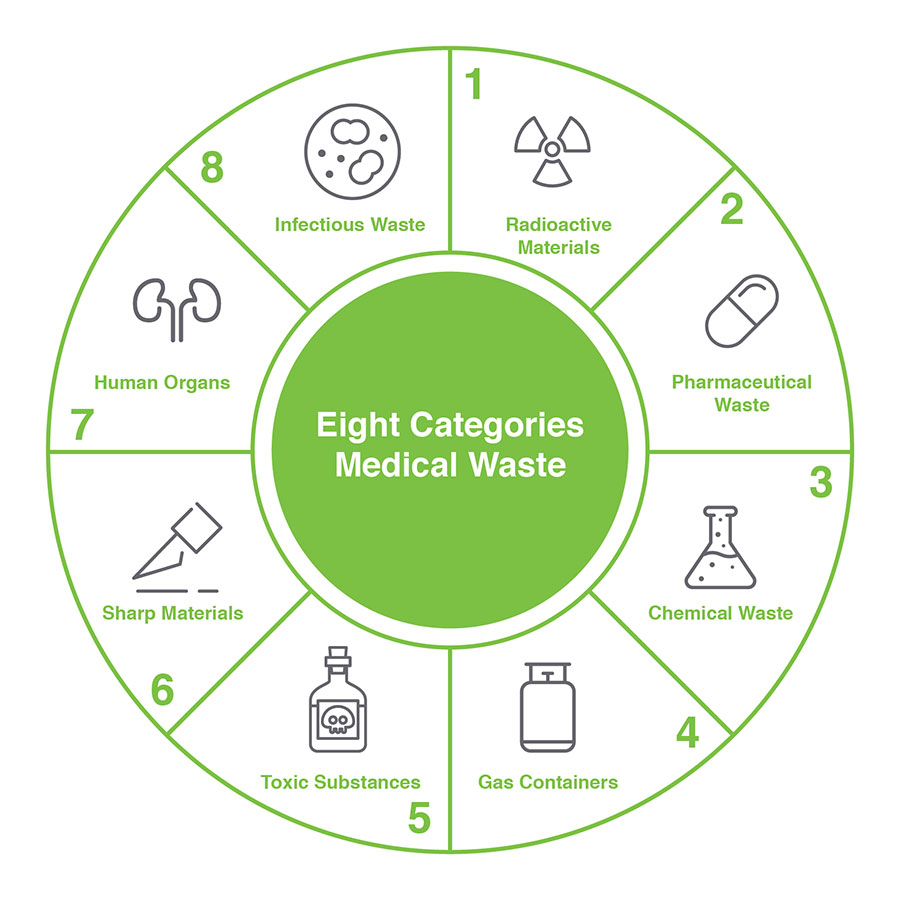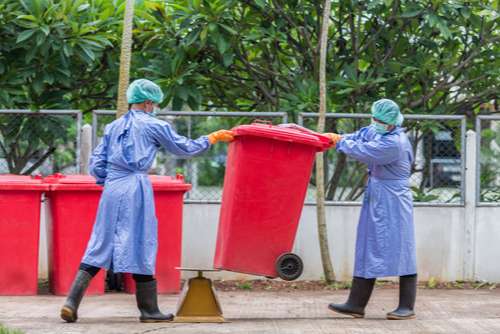Neighborhood Care: Seamless and Reliable Medical Waste Removal Near Me
Neighborhood Care: Seamless and Reliable Medical Waste Removal Near Me
Blog Article
Remain Ahead of Laws: Professional Suggestions on Medical Waste Disposal
In a world where the medical care sector is continuously progressing, it is important for clinical facilities to remain ahead of laws when it comes to the proper disposal of medical waste. From comprehending the different groups of clinical waste to implementing the appropriate collection and partition methods, this conversation will give useful insights and workable pointers to help centers remain in advance of guidelines in the ever-changing landscape of medical waste disposal.
Comprehending Clinical Waste Categories
Recognizing medical waste categories is necessary for appropriate disposal and administration in health care centers. Medical waste refers to any type of waste created by health care tasks that might posture a hazard to public wellness or the setting. It is crucial to classify medical waste accurately to guarantee its safe handling, therapy, transportation, and disposal.
There are numerous classifications of clinical waste that healthcare facilities need to be accustomed to. One of the most usual categories include infectious waste, pathological waste, sharps waste, pharmaceutical waste, and chemical waste. Each category has details standards and guidelines for its proper administration and disposal.
Pathological waste refers to human tissues, body organs, or body components that require unique handling and disposal. Pharmaceutical waste comprises run out, unused, or contaminated medicines that need cautious handling and disposal.
Remaining Up-To-Date With Regulatory Changes
Remaining current with regulative changes is crucial for healthcare centers to make certain conformity and proper monitoring of clinical garbage disposal. medical waste removal. With regulations frequently evolving, it is essential for healthcare facilities to remain updated to prevent penalties, fines, and prospective damage to the environment and public health
To stay ahead of governing changes, medical care centers must establish a system for monitoring and monitoring updates. This can be done by subscribing to regulative newsletters, attending workshops and conferences, and proactively taking part in market associations. Furthermore, centers must assign an employee or team liable for staying educated and distributing info to appropriate stakeholders.
Regular communication with regulative companies is also crucial. Healthcare facilities must develop partnerships with local, state, and government firms to ensure they understand any kind of changes in guidelines that may impact their waste administration practices. This can be done via routine conferences, engagement in public remark durations, and aggressive interaction with governing companies.
In addition, healthcare facilities need to think about partnering with waste management firms that specialize in medical garbage disposal (medical waste disposal services with WasteX). These companies are usually well-versed in the most up to date policies and can offer support and assistance to make sure conformity
Implementing Proper Collection and Segregation Methods
To efficiently take care of clinical waste disposal, health care facilities have to develop correct collection and segregation approaches based on governing guidelines. Carrying out these techniques guarantees the risk-free handling and disposal of possibly unsafe products, shields the setting, and minimizes the threat of infections and injuries to health care workers and the public.
Appropriate collection and segregation approaches include using marked containers and labeling systems. Healthcare facilities should supply clearly labeled containers for various kinds of clinical waste, such as sharps, contagious waste, pharmaceutical waste, and non-hazardous waste. These containers need to be color-coded and plainly significant to prevent complication and promote easy recognition.
In addition, medical care facilities ought to train their personnel on the appropriate treatments for accumulating and segregating clinical waste. This includes enlightening them on the various kinds of waste, the suitable containers to use, and the value of complying with guidelines and laws. Normal training sessions and correspondence course must be carried out to ensure that personnel stay updated on ideal practices.
Furthermore, healthcare facilities must establish a system for normal collection medical waste disposal services with WasteX and disposal of medical waste. This might involve partnering with certified waste monitoring companies that concentrate on clinical garbage disposal. These companies will certainly ensure that the gathered waste is carried and disposed of in conformity with regulative demands.
Picking the Right Disposal Techniques

Incineration is one of one of the most typical and reliable methods for getting rid of specific types of medical waste, such as pathological waste and sharps. It involves the regulated burning of waste at heats, minimizing it to ash. Nonetheless, incineration can release hazardous pollutants right into the air and add to air pollution.

Chemical treatment includes the use of chemicals to sanitize and reduce the effects of the waste. Microwave treatment makes use of microwave power to warm and sanitize the waste.
Making Sure Conformity Through Documents and Training
After thoroughly taking into consideration the suitable disposal methods for medical waste, medical care centers need to ensure compliance with laws and lessen ecological impact by carrying out efficient documents and training treatments. This action is critical in preserving a lasting and safe environment for both medical care employees and the basic public.

Training like it is equally vital in ensuring compliance with laws. Healthcare employees that manage medical waste must receive suitable training on waste partition, taking care of, and disposal treatments. This training must cover topics such as the proper usage of individual safety tools, recognition of various kinds of waste, and the correct disposal techniques for each waste category. By supplying thorough training, medical care centers can equip their staff to make enlightened decisions and reduce the danger of improper waste disposal.
Final Thought
In conclusion, staying in advance of laws in clinical garbage disposal is vital for healthcare facilities. medical waste removal. Understanding the various groups of clinical waste, remaining updated with regulative changes, executing correct collection and segregation methods, selecting the proper disposal approaches, and guaranteeing compliance through documentation and training are all necessary steps. By adhering to these guidelines, medical care organizations can successfully get rid of and take care of of clinical waste in a accountable and secure way
From recognizing the different categories of medical waste to executing the appropriate collection and partition techniques, this conversation will offer actionable tips and beneficial insights to help centers remain ahead of laws in the ever-changing landscape of medical waste disposal. - medical waste disposal services with WasteX
The most usual classifications consist of contagious waste, pathological waste, sharps waste, pharmaceutical waste, and chemical waste. Healthcare facilities need to supply plainly classified containers for various kinds of medical waste, such as sharps, transmittable waste, pharmaceutical waste, and non-hazardous waste. Medical care facilities ought to establish a thorough system to tape and track all elements of medical waste disposal, including kinds of waste generated, quantities, and disposal approaches utilized. Medical care employees who take care of medical waste must obtain proper training on waste partition, taking care of, and disposal treatments.
Report this page